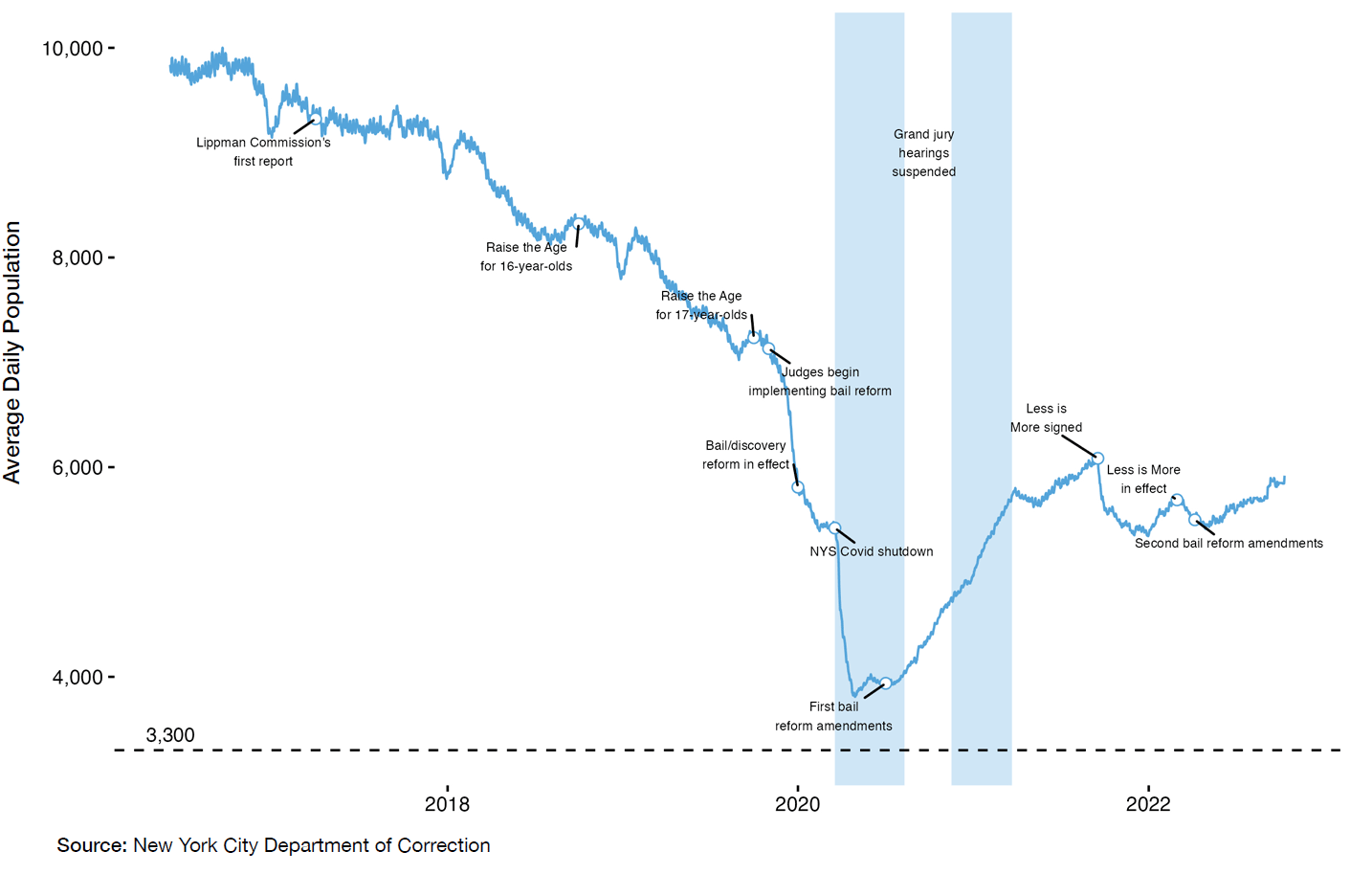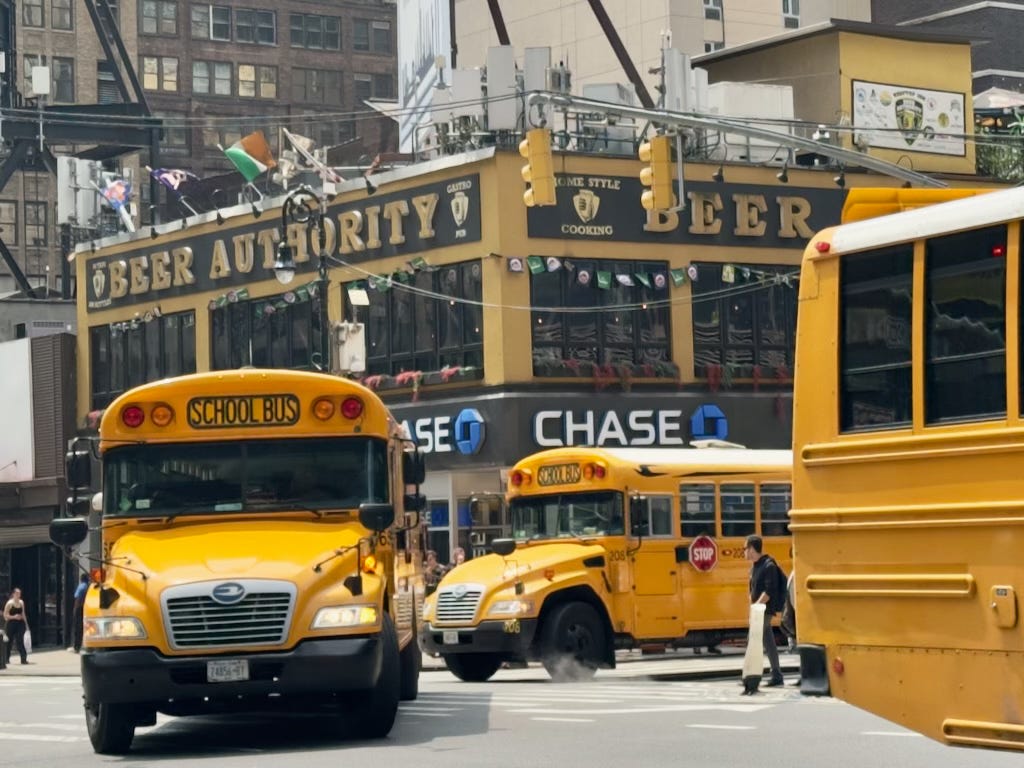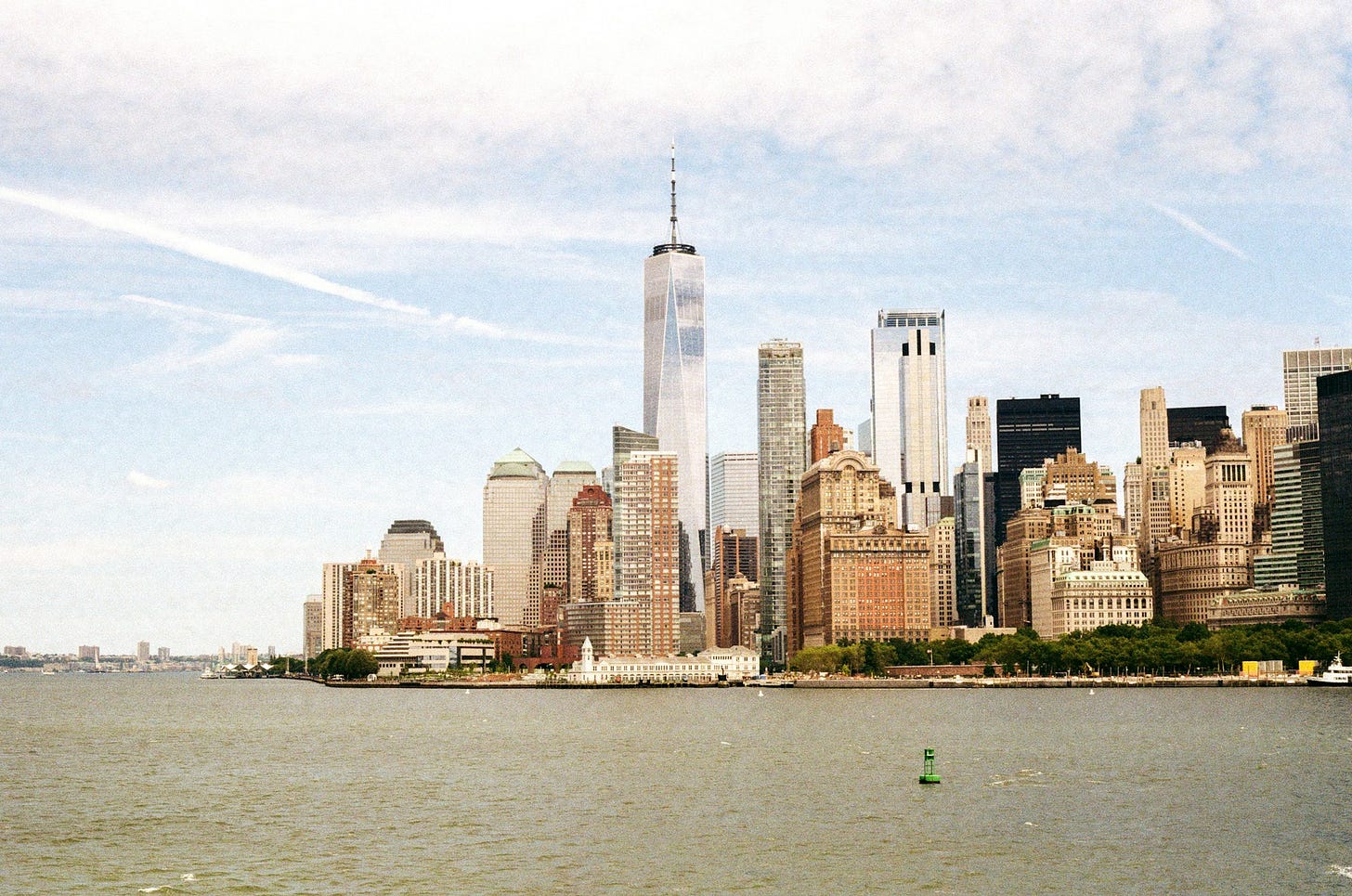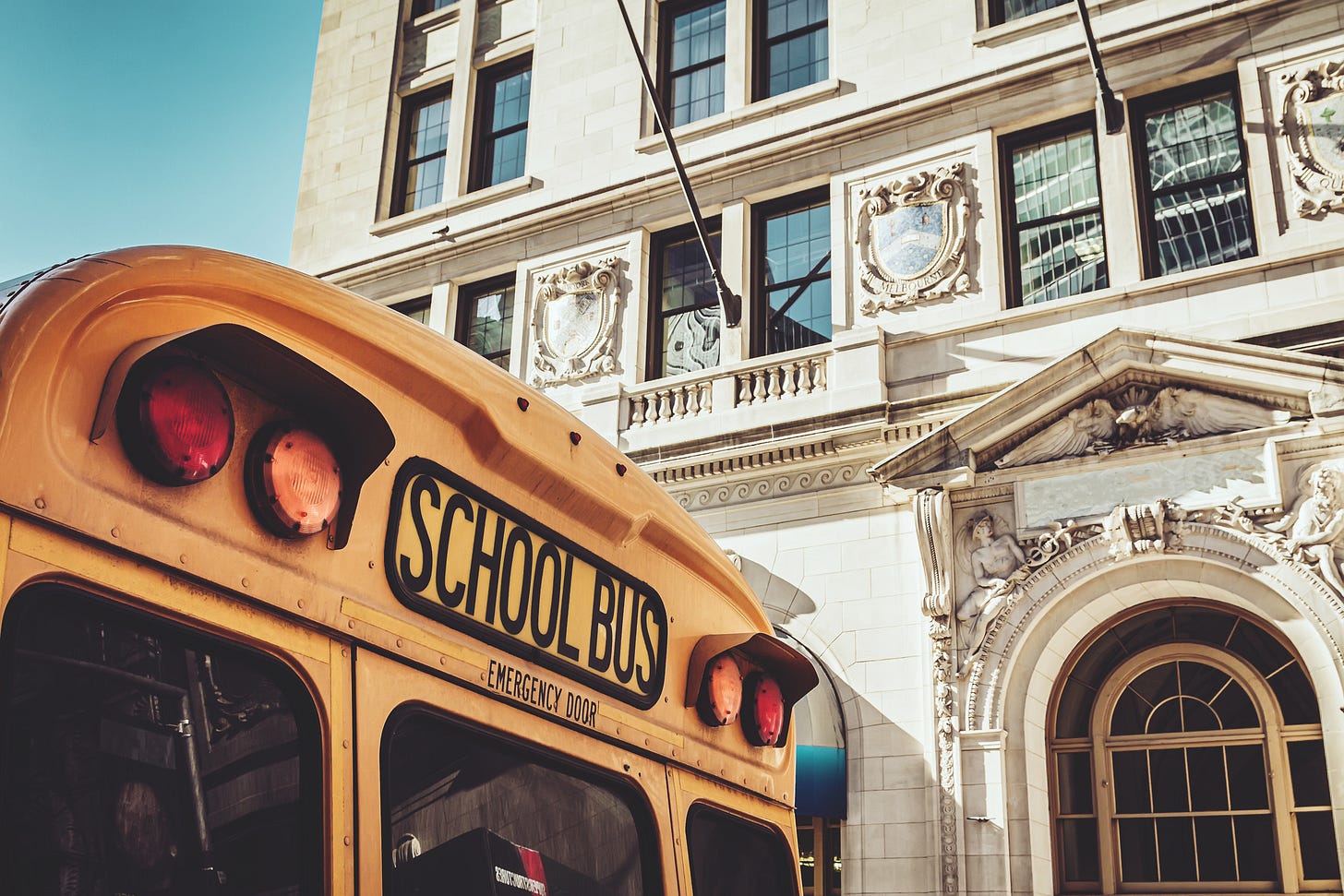New York’s School Wars Miss the Real Problem
Focusing attention on a tiny number of “gifted” students distracts from the bigger issue: the baseline quality of the city’s schools is so uneven it’s driving families out.
Every few years, New York re-litigates the same questions: Should the city test four-year-olds for accelerated programs? Scrap them altogether in the name of equity? Keep the single exam for specialized high schools? With a new administration coming in January, these debates are back. But by focusing on a tiny number of “gifted” students, the city is once again ignoring the bigger issue: the baseline quality of schools is so uneven it’s driving families out.
Some families with means buy or rent their way into strong zones and districts, often paying thousands more for apartments. Others throw themselves into test prep or the gifted lottery. Many simply leave the city. For lower-income families without the option to move, charters — now serving nearly 15% of public school students — have become the alternative.
This scramble reflects a system in which the floor is too low. In Finland, Singapore, or Germany, parents don’t panic because almost every neighborhood school delivers competent instruction. Differentiation still happens, but later, and every track is respected. In New York, the gulf between the best and worst schools is so wide that for many, every gifted or specialized seat feels like a lifeline.
That gulf also explains why Zohran Mamdani’s proposals to eliminate accelerated programs before high school are so contentious. In a system this uneven, ending acceleration without fixing the base risks narrowing opportunity further.
Mississippi, not exactly the place New Yorkers typically look to for a model, has recently shown this situation can be turned around. A decade ago, it ranked near the bottom in literacy. Today, its fourth graders score above the national average thanks to clear benchmarks, phonics-based instruction, teacher coaching, transparent reporting, and accountability across the board, including retention for struggling readers.
Mayor Adams has taken steps in this direction, rolling out phonics-based curricula and dyslexia screenings with promising early results. The next mayor should build on that momentum and keep and expand what’s already working. Until New York raises the floor, I worry that families will keep leaving.
Campaign Update
Mayor Eric Adams dropped out of the race on Sunday and will be the first single-term mayor since David Dinkins. He did not endorse any of his opponents.
There have been a number of stories since on Adams’ record. While the NYT chose to focus on the negatives, the cronies and corruption scandals that brought him down, the mayor does have an impressive list of accomplishments, as our own John Ketcham points out in the New York Post.
In order to have a shot at winning against the popular young socialist Zohran Mamdani, the moderates had to consolidate. But in the latest polls, Mamdani leads by 18 points, and unless the Republican Curtis Sliwa also drops out, Mamdani almost certainly wins. Can Andrew Cuomo get-out-the-vote and convince about half of Sliwa’s supporters to vote for him? Check out this City Journal podcast.
If elected, Mamdani would scrap the Gifted & Talented track of accelerated education in the early grades, while Cuomo and Sliwa said they would keep the gifted program and expand it if elected mayor. None would touch the selective high schools.
MI Report: Socialism on The Hudson
MI’s Ken Girardin took an in-depth look at the dark side of what Socialism on the Hudson could mean for New York.
While only a handful of lawmakers identify as socialists, many current legislative proposals reflect socialist-style policies that expand government control in areas ranging from health care and housing to transit, energy, and banking.
Taken together, these measures would make New York less competitive and more costly, Girardin argues, pointing out that proponents often ignore how existing state and local policies already drive up expenses, fail to offer cost estimates, and overlook both inefficiencies in current public services and the risks of politicizing massive new programs.
This report explores the most consequential proposals to expand the role of state government in New York.
Extra! Extra!
Gas Fumes: Last week the council passed legislation requiring, among other things, that you will need a licensed master plumber (of which there are just 1,000 in the city) to connect your gas stove — a simple job Home Depot has DIY instructions for. As Josh Barro writes:
We are burdened with a zillion little regulations that all have their own arguments for why they’re a good idea, but that ultimately make everything we do cost more than in a less regulated jurisdiction.
But recent laws require almost all new construction to have electric appliances — even NYCHA is replacing old gas stoves with new electric ones. And while the rule is basically unenforceable in private homes, I expect these plumbers will be more busy disconnecting gas stoves, than connecting them. John Ketcham will have more on this next week.
The Price of Commuting: The MTA is raising basic fares to $3.00 starting in January, express buses will be $7.25, and all tolls will increase by 7.5%.
20-Story NYCHA Building in the Bronx Partly Collapsed: A ventilation shaft in a building on Alexander Avenue collapsed after reports of an explosion, according to officials. There were no reports of injuries.
Rent’s Up: A rent freeze may be coming in the Mamdani era, but not yet: In roughly 1 million rent-stabilized apartments across the city, rents went up on October 1 by 3% on one-year leases and 4.5% on two-year leases.
DATA: New York City’s Jail Population, June 2016–October 2022

Prison Ship Scrapped: New York City’s Vernon C. Bain Correctional Center, the last floating jail in the U.S., was shut down back in 2023 after more than 30 years in operation. It will now be towed from the Bronx to Louisiana, where it will be dismantled and sold for parts, generating $1.5 million for New York City. (Jake Offenhartz wrote a story in 2023 when it was decommissioned on the history of the barge.)
Its 500 or so inmates were transferred back to Rikers, the troubled jail complex that the city, by law, has to close down in 2027. However, the four borough-based jails that are supposed to replace it are way behind schedule and over budget. On top of this, the new jails will not have the capacity to serve the city: The headcount at Rikers is about twice the expected number of beds in the new system. As Nicole Gelinas wrote back in the spring, the plan to close Rikers is failing, and no one is willing to admit that.
More on Education:
MI’s recommendations for the next mayor call to strengthen the Department of Education’s programs and schools, expand educational choice and innovation, pursue necessary legislative reforms in Albany, and restore a family- and community-centered focus to make New York City and its schools attractive to families once again.
Past recommendations: Back in 2021, MI’s Ray Domanico argued that New York should stop screening 4-year-olds for gifted programs, reintroduce enrichment opportunities later (in upper elementary and middle school) in every district, and hold underperforming schools accountable while preserving selective high schools and expanding school choice.
Substack Recommendation
Josh Barro, who I quoted earlier, writes with clarity and bite about the intersection of economics, culture, and politics, challenging conventional wisdom in a way accessible and grounded in data. Although Very Serious is not specific to New York, his analysis offers useful context for the debates playing out in the city.
Video of the Week: Streets Make Cities or A Love Letter to West 4th Street
Watch and you shall learn about why we care so much about streets: their function, what makes for a good one, and why we end up loving some more than others.








Education of gifted and non- is the SAME issue. Kids (as do all human beings) have widely varying abilities. Expecting those of differing academic abilities to achieve a common standard is as absurd as expecting those of varying athleticism to perform to a single standard. The preponderance of Asian and whites and the lack of certain minorities in IQ-stratified (K-20) education reflects the underlying (average) abilities of the groups involved (individuals of any group can be at the top or bottom of the group's distribution). That's life. You either accept the truth about people and the differences between groups or you fantasize about a kumbaya world that does not and can never exist. Which is The Bigger Apple's choice?